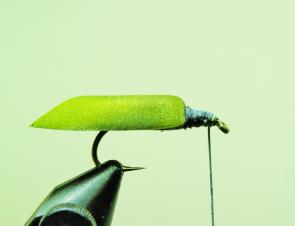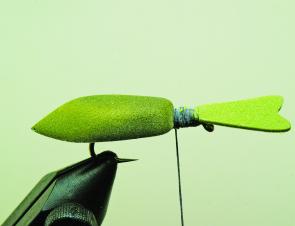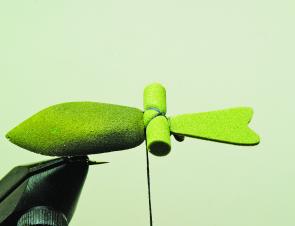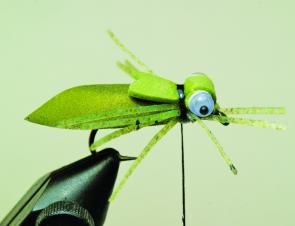Whether you’re a bait anger or a fly fisher, mudeyes are always a topic of conversation when fishing the lakes.
At certain times of the year usually, around late summer into autumn the dragonfly larva begin to migrate from lake floors, sunken timbers and rocks. They either crawl or swim to higher ground to hatch into the adult dragonfly.
I have seen mudeye hatches where they have crawled up the back of anglers standing out in the lake; a very unnerving feeling after dark. The fish of Lake Pedder back in the 1970’s absolutely gorged themselves on the massive hatches that used to occur there after the lake flooded. I recall one evening shining a torch into the tannin waters to see countless thousands of mudeyes crawling and swimming. No wonder the trout grew to such prodigious sizes.
You take from that, the mudeye is a high protein food item for the trout, and given that autumn is the time especially for the browns that they want to pack on some condition before the cold barren months of winter, what better way than to have a feed of mudeye.
There are two types of dragon fly larva that are used by anglers to target the mudeye feeders; they are the couta mudeye, a larger elongated larva. Then there is the spider mudeye, which has a shorter more rounded body hence the nickname of spider.
This pattern, the Loco Mudeye is an imitation of the spider mudeye and is a very effective night time fly, it is quite a durable fly, has a great profile and plenty of movement from the rubbery legs, all important attributes when used as a night time fly.
As with some other of my recent ties this also is made entirely of foam, gaining inspiration from Stu Tripneys DVD “A foam odyssey”.
It is a high floater and the blunt head allows it to push a little wake in front if it as it is being slowly stripped back across the surface. Often if it is a still night you will hear the fly being slurped down just seconds before you feel the tension come onto your line.
It has also been effective for some of my bait fishing friends whom I often refer to as the ‘un-enlightened ones’. They have used it behind a bubble float as a secondary to the natural.
It is also an effective weapon for fish feeding at last light along the weedy edges where a weighted fly would sink and get caught up. Spot your feeding fish mooching through the weeds and place a cast in front, let the fly just sit where it will often get sipped down, or if your unsighted and not sure where the fish is give the fly a slight draw just to make it move a couple of inches, the response if the fish is close by can be a little more boisterous.
Facts
TYING INSTRUCTIONS and MATERIALS
| HOOK: | Mustad R50 #8 |
|---|---|
| THREAD: | Black pre-waxed 6/- |
| BODY: | Medium foam bug body |
| LEGS: | Olive crazy legs or similar |
| WINGCASE: | 1mm olive foam |
| EYES: | 3mm joggle eyes |
| EYE POST: | Medium olive foam post. |

Cut a slot in the bottom of the foam body about the length of the hook shank. Attach the thread to the hook and then apply a bead of superglue gel to the thread covered hook shank. Press the bug body onto the hook ensuring the shank sits in the cut slot.

Now wind the thread tightly over the first part of the bug body as shown.

Using a size 12 caddis wing cutter cut the wing case from a sheet of 1mm olive coloured foam, as shown.

Now tie in the wing case as shown making sure that the thread base is left relatively level.

Take an olive foam tube, sold as wing posts. Apply a small drop of superglue gel to the thread base and sit the foam tube on top, secure in place with some figure eight raps of thread.

Pull the wing case over the foam tube and secure in place with turns of thread.

Trim the foam post level with the edge of the wing case. Take 2x2mm joggle eyes and applying another drop of superglue gel to the end of the foam post, secure the joggle eyes in place as shown.




